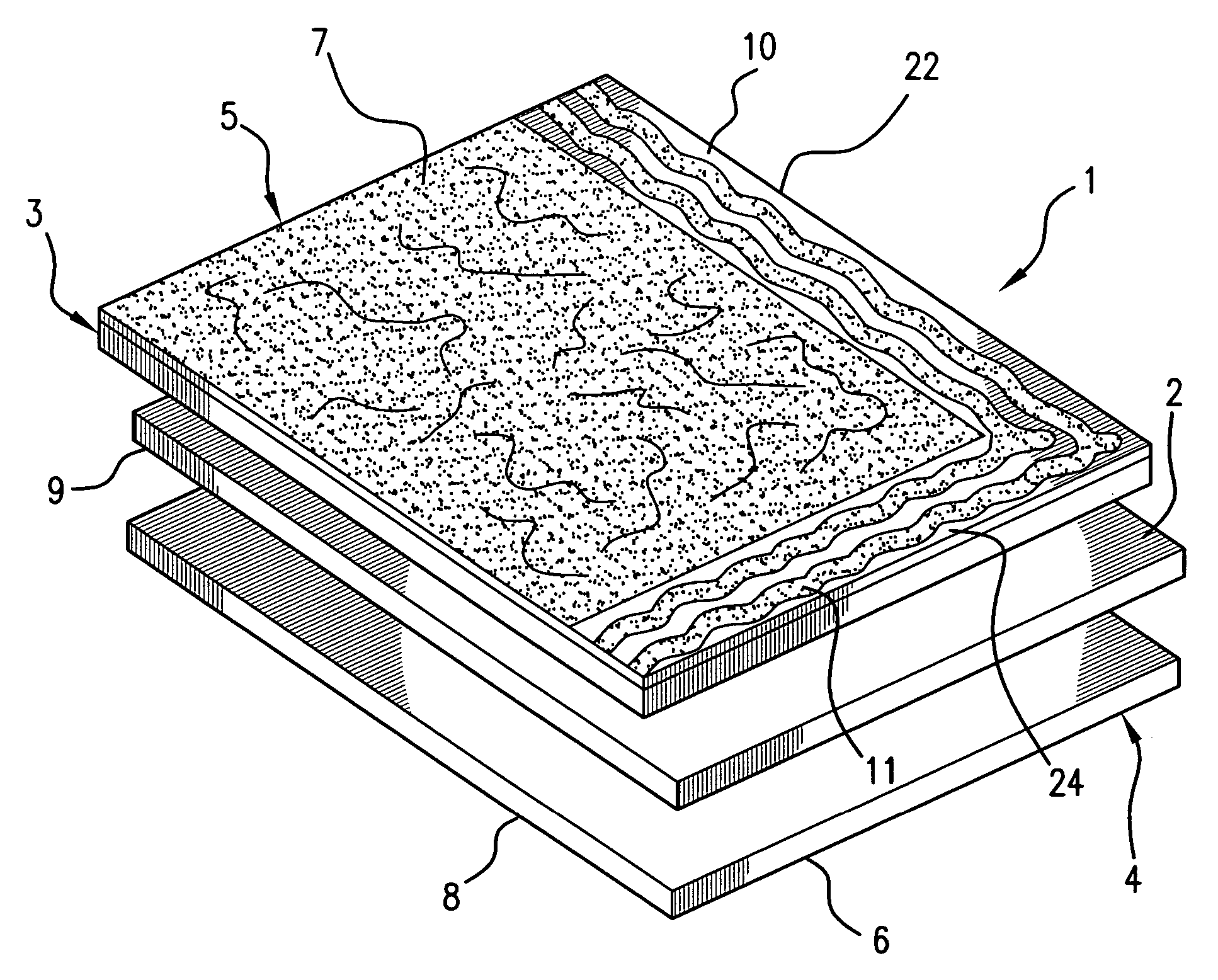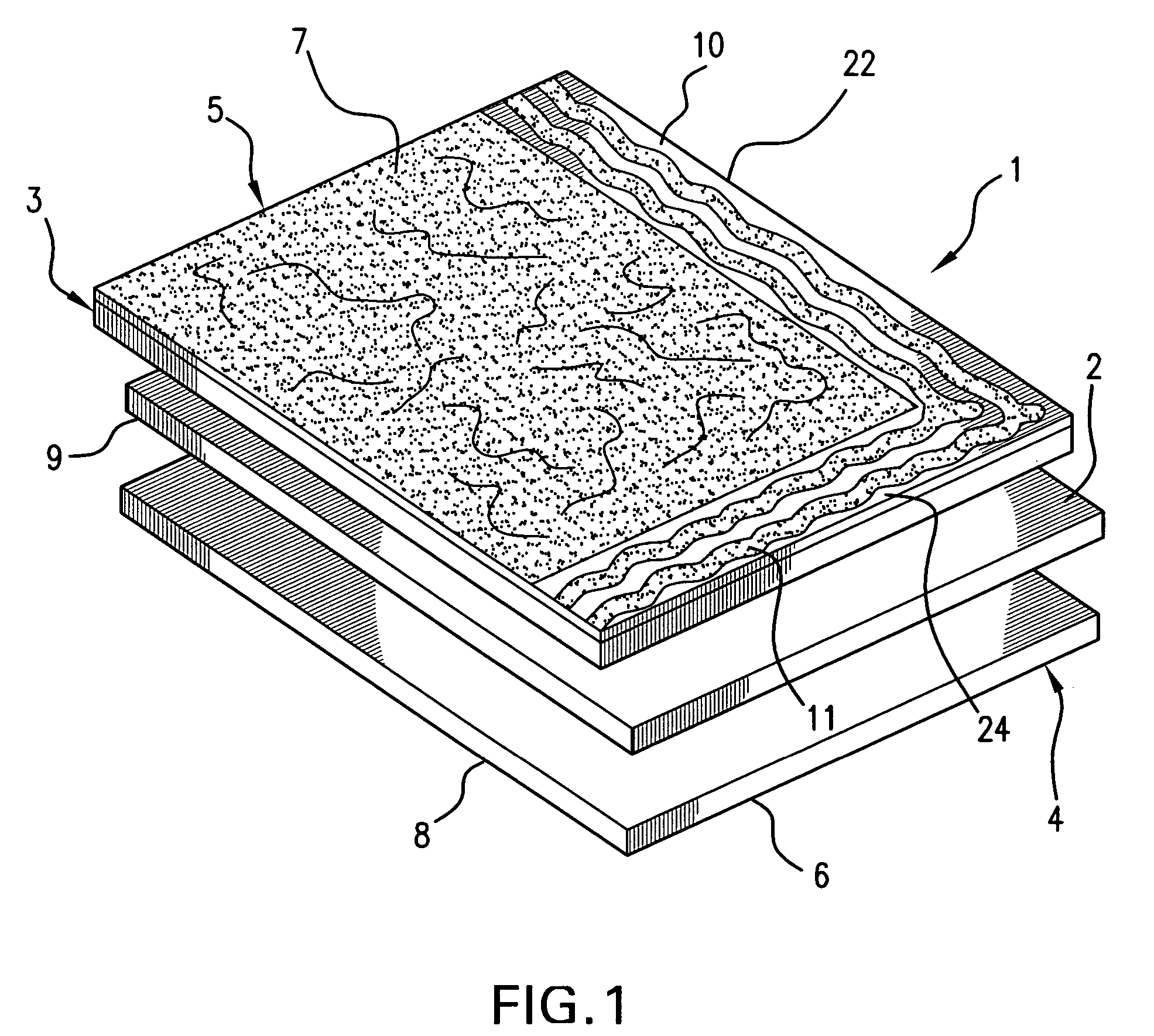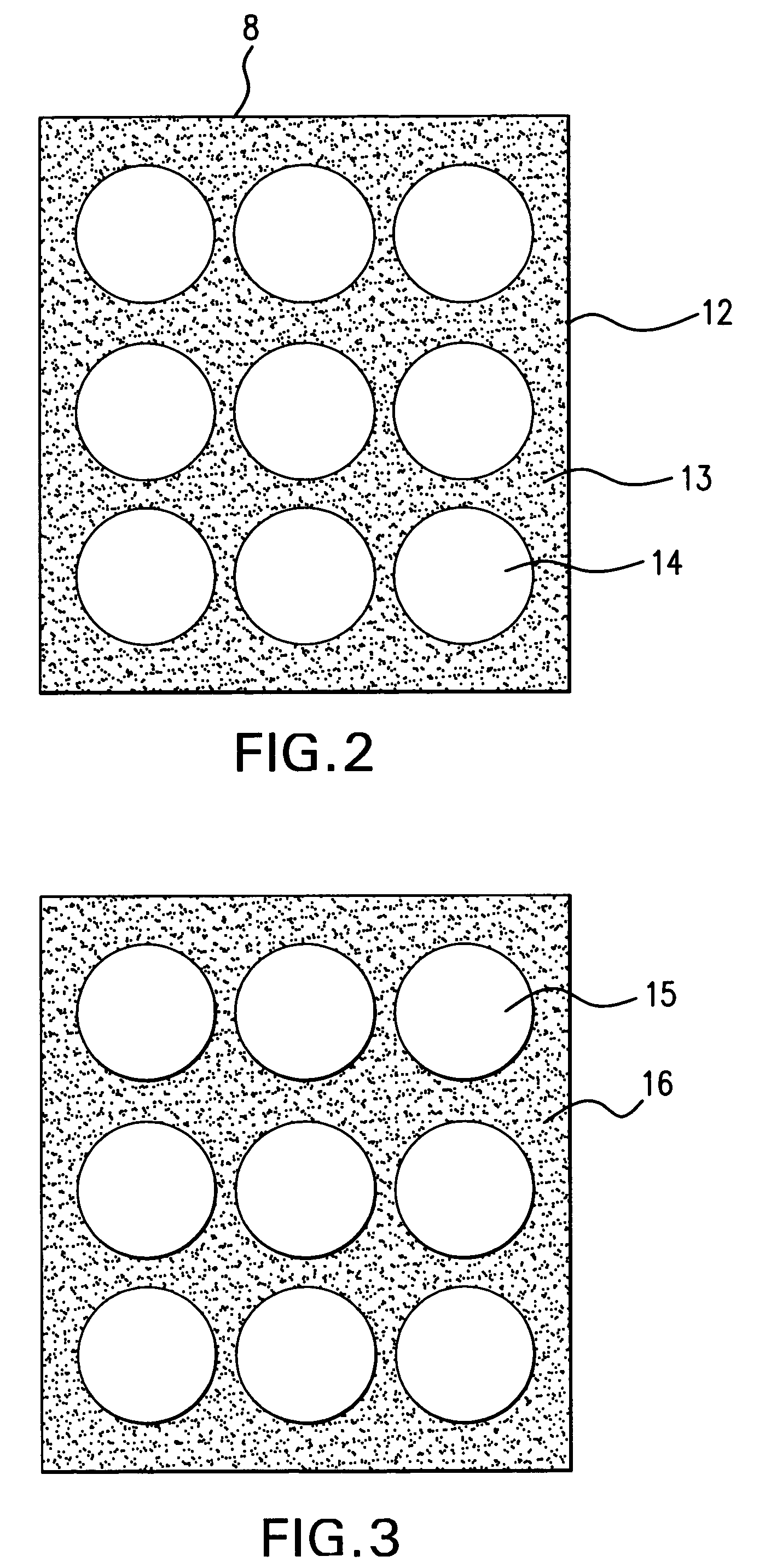An ice-dam occurs when water flows down the roof, gets trapped on protruding edges and freezes, thus causing a build up of ice, which may cause
cracking.
Ice-dam protection is an issue in steep-slope applications, which tend to be mostly residential.
However, self-adhering membranes, e.g. some underlayments, can also not include reinforcement.
Each of the available methods of application has some
disadvantage.
Torching can thus be a dangerous undertaking due to the risk of fire caused by the utilization of a
torch and similar equipment.
While it reduces the risk of fire, it creates additional operational problems.
For example, hot mopping is labor intensive, especially in larger projects, and results in waste cartons with
chemical residue, that must be disposed of properly.
The disposal itself is also costly and labor-intensive.
While this problem can be eliminated by using a hose to pump the
asphalt to the roof, it is very difficult and dangerous to do so, especially in high-rise buildings installations.
Because cold adhesives generally come in buckets or
pressurized spray can systems, their use also poses problems related to disposal of empty buckets or
aerosol cans.
Additionally, cold adhesives contain solvents that are not desirable from an environmental point of view and have a potential for the release of airborne pollutants.
Mechanical fastening is a slow and cumbersome process, which labor intensive and not always appropriate.
While solving many of the problems of the installation techniques, self-
adhesive materials do have drawbacks.
These drawbacks are mainly due to their enhanced capacity for complete adhesion.
This can be problematic because such full adhesion does not allow for ventilation of the roof or surface when necessary.
A
deck made of plywood that is fully adhered to the roofing membrane can be damaged over a period of time if this
moisture is not allowed to escape.
Furthermore, total adhesion of the roofing membrane to a plywood
deck can be problematic when re-roofing is necessary, because there is a higher risk of damaging the underlying surface during roof tear-off.
If a membrane that does not allow for proper ventilation is installed before the concrete is sufficiently cured,
moisture and other gases may become entrapped in the concrete.
This may result in blister formation on the membrane, and could eventually lead to rotting and decaying of both the concrete substrate and membrane.
Similarly, full adhesion is undesirable when installing roofing membranes over insulations such as
polyisocyanurate (Polylso),
expanded polystyrene (EPS) or extruded
polystyrene (XPS), due to the need for an escape
route for the gases that are released from these types of insulations.
Although probably more pronounced with self-
adhesive materials, the aforementioned problems regarding lack of ventilation may occur with any of the currently used methods of roofing membrane installation.
However, none to date have been entirely satisfactory.
This “spot attachment” of the
slip sheet to the deck provides a path for the escape of gases, vapor and pressure, but it is also labor intensive and adds labor and material cost to the roofing
system.
Second, the absence of penetrating fasteners helps separate the roofing membrane
system from the underlying insulation, thereby impeding thermal bridging which is frequent problem in temperature-controlled building such as cold-storage facilities.
Though these types of self-adhering venting membranes have been used successfully for several years, they have several limitations.
This is exacerbated by the fact that the membranes have
aluminum foil laminated to the self-adhesive compounds, which cause them to be very rigid to begin with, especially in
cold weather conditions.
This is a problem because unlike in torching or hot mopping installations, there is no heat involved in the installation of self-adhesive membranes, which can be used to render them more pliable in situ.
If they are not flexible enough at the time of application, the adhesive bond between the membrane and the substrate may be affected and over time will cause the membrane to disengage from the substrate.
For example, if the
aluminum foil is not laminated properly to the self-adhesive compound during manufacture, it may disengage from the compound during packaging, transportation or field-application.
Additionally, limitations in the processes of manufacture of the foil as well as lamination of the foil to the venting membrane limit the amount of perforation possible.
For example, excessive perforation can lead to workability problems.
One such problem is poor dimensional stability, which results in the inability to wind and then unwind the foil when laminating it to the self-adhesive compound during manufacture of the venting membrane.
Thus process limitations which
restrict the amount and the design of the open area limit the level and flexibility in level of adhesion which can be obtained.
 Login to View More
Login to View More 


